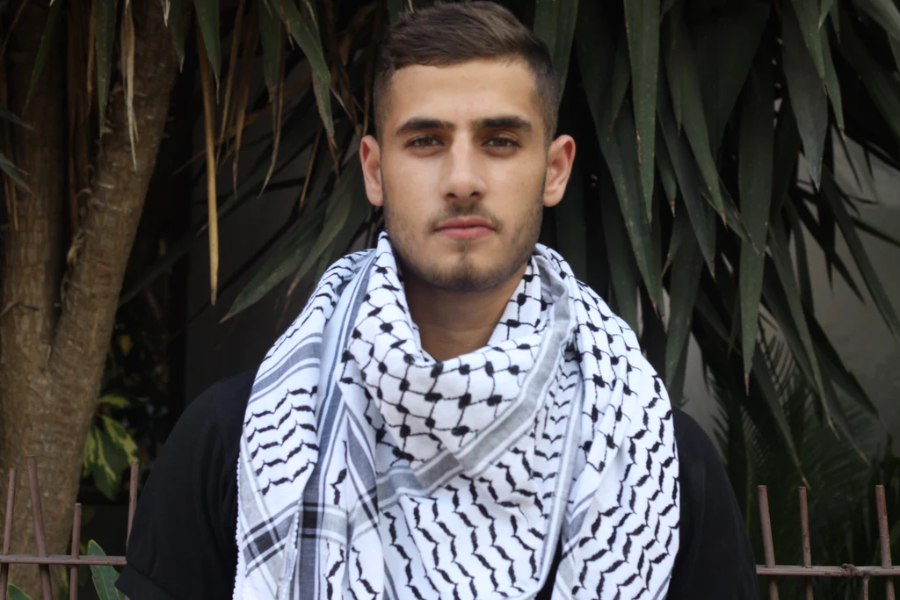The Cultural Symbolism of Kuffeye: What You Need to Know
The kuffeye, commonly known as the keffiyeh, is far more than just a piece of clothing. This traditional garment embodies a rich cultural history and serves as a symbol of identity, resistance, and pride. The kuffeye comes in various forms, such as the kuffeye scarf, thobe, and even oversized unisex shorts, each telling a unique story of heritage and resilience. In this article, we’ll delve into the deep cultural significance of the kuffeye, uncovering the layers of meaning woven into its fabric.
Women’s Fashion
The kuffeye holds a special place in women’s fashion, merging tradition with contemporary style. It can be worn in a multitude of ways, from the classic scarf to innovative pieces like oversized unisex shorts. For many women, the kuffeye is more than just an accessory; it’s a statement of cultural pride and solidarity.
Women across different cultures have embraced the kuffeye, wearing it to express their individuality and connect with a broader cultural narrative. Whether draped as a scarf or worn as a headpiece, the kuffeye represents unity, strength, and timeless appeal, resonating with those who appreciate fashion with deep roots.
Palestinian Keffiyeh
The Palestinian keffiyeh, also known as the kuffeye or keffiyeh scarf, is a symbol deeply tied to Palestinian heritage and resistance. This fabric, often distinguished by its checkered pattern, has been a staple in the Middle East for centuries. Originally used by farmers for protection against the harsh elements, the keffiyeh evolved into a potent emblem of solidarity, particularly within the context of the Israeli-Palestinian conflict.
During periods of Ottoman and British rule, the keffiyeh became a symbol of resistance against colonial powers. Prominent figures, like Yasser Arafat, popularized its use, solidifying its status as a symbol of Palestinian nationalism and resilience. Today, the keffiyeh is recognized globally, appreciated both for its cultural significance and its versatility as a fashion item.
Ottoman and British Period
The keffiyeh’s history is deeply intertwined with the social and political landscapes of the Ottoman and British periods in the Middle East. Under Ottoman rule, it was a common garment worn by men and women of all social classes, often indicating regional and cultural affiliations through its distinct patterns.
With the advent of the British Mandate, the keffiyeh’s role shifted to a symbol of resistance against colonial oppression. Its significance grew as it became associated with the Palestinian struggle for independence, with the black-and-white checkered pattern becoming a universal symbol of Palestinian identity and solidarity.
Israeli-Palestinian Conflict
In the context of the Israeli-Palestinian conflict, the keffiyeh has emerged as a powerful symbol of resistance and resilience. It represents the ongoing struggle for Palestinian recognition and rights amidst a backdrop of conflict and adversity.
The keffiyeh serves as a reminder of the humanitarian crises associated with the conflict and underscores the importance of empathy and dialogue in seeking resolution. It transcends its status as a garment to become a symbol of hope, pain, and perseverance for those engaged in the struggle.
Australia and Canada
The keffiyeh’s influence extends beyond the Middle East, finding a place in the cultural landscapes of countries like Australia and Canada. In these diverse societies, the keffiyeh is not just a fashion statement but also an expression of cultural solidarity and awareness. It has been adopted by various communities as a symbol of support for Palestinian rights and heritage.
In Australia, the keffiyeh is seen at protests, cultural festivals, and in everyday wear as a symbol of social justice. Similarly, in Canada, known for its multicultural inclusivity, the keffiyeh is worn to show solidarity with marginalized groups and to support global struggles for justice and equality.
Kuffeye Scarf
The kuffeye scarf is a versatile and iconic item that carries profound cultural significance. Initially created for practical use against harsh desert conditions, it has since evolved into a symbol of resistance and cultural identity. The scarf’s distinctive checkered patterns, typically in black and white or red and white, are rich with symbolic meaning.
The kuffeye scarf has gained popularity among fashion enthusiasts worldwide, from casual streetwear to high fashion runways. Its ability to blend tradition with contemporary style makes it a staple in modern wardrobes, allowing wearers to make a meaningful statement about their beliefs and values.
Kuffeye Thobe
The Kuffeye Thobe is a traditional garment that elegantly combines Palestinian cultural heritage with modern fashion trends. This flowing dress, often decorated with intricate embroidery, is more than just clothing; it is a symbol of cultural pride and history. The thobe’s design is rooted in centuries-old traditions but remains relevant and stylish today.
Versatile enough for casual wear or special occasions, the Kuffeye Thobe is a testament to the creativity and resilience of the Palestinian people. It showcases their unique identity through vibrant patterns and meticulous craftsmanship. Wearing a Kuffeye Thobe is a celebration of a rich cultural legacy that continues to thrive despite challenges.
Kuffeye Oversized Unisex Shorts
Kuffeye Oversized Unisex Shorts offer a contemporary twist on traditional Palestinian clothing. These shorts combine comfort with cultural symbolism, making them a popular choice for those who want to make a bold fashion statement. The oversized fit and distinctive kuffeye patterns give these shorts a unique appeal, allowing wearers to express their individuality and cultural pride.
The unisex design promotes inclusivity, making these shorts accessible to everyone regardless of gender. Whether paired with a simple t-shirt or a more elaborate top, Kuffeye Oversized Unisex Shorts are a versatile addition to any wardrobe, embodying a fusion of tradition and modern fashion.
Recently Viewed Products
Our “Recently Viewed Products” feature enhances your shopping experience by helping you easily find items you’ve previously shown interest in. Whether you’re looking at a kuffeye scarf, thobe, or oversized shorts, this tool allows you to continue exploring where you left off.
Our collection features a wide range of kuffeye styles, each with its unique story and significance. By revisiting your recently viewed products, you can make more informed decisions and find the perfect item that resonates with your personal style and cultural appreciation.
Compare Color
One of the unique aspects of the kuffeye is the variety of colors and patterns available, each with its own significance. The traditional black-and-white checkered pattern is most commonly associated with Palestinian nationalism and resistance. However, modern versions include vibrant colors like red, blue, and green, each adding a new dimension to the garment.
Choosing a kuffeye is not just about fashion; it’s about selecting a piece that reflects your beliefs, values, and cultural understanding. Whether you opt for a traditional color or a modern hue, each choice speaks volumes about your connection to heritage and the statement you want to make.
What is the Symbolism of the Keffiyeh Patterns?
The keffiyeh’s distinctive checkered pattern is rich with symbolism. Traditionally, the black-and-white pattern represents resistance and solidarity, symbolizing resilience and pride for Palestinians. Globally, it has been adopted as a sign of support for their struggle. The intricate weaving patterns also reflect the interconnectedness of communities bound together by a shared history and cause.
Every element of the keffiyeh’s design holds meaning, making it more than just a piece of clothing. It is a visual representation of identity, heritage, and the enduring spirit of a people who continue to face adversity with strength and dignity.
Know What Your Keffiyeh Stands For
Wearing a keffiyeh is an act of solidarity and awareness. It symbolizes support for Palestinian heritage and a stand against oppression and injustice. Understanding the keffiyeh’s significance adds depth to its fashionable appeal. It is not merely a trendy accessory; it is a powerful symbol of unity and resilience.
The keffiyeh’s patterns carry meanings tied to land, agriculture, and the struggle for freedom. By wearing a keffiyeh, you honor the legacy of those who have fought for their rights and cultural identity. It is a reminder that fashion can be a medium for expressing solidarity and promoting awareness of global issues.
Go to Keffiyeh Collection | 20+ Keffiyeh Styles
Our extensive Keffiyeh Collection features over 20 unique styles, offering something for everyone. Whether you’re looking for a traditional design or a modern interpretation, our collection has a variety of options to suit your taste. Each keffiyeh is a piece of art, telling a story of cultural heritage and individual expression.
Facts
- Definition: The kuffeye, also known as the keffiyeh, is a traditional Middle Eastern garment characterized by its distinctive checkered pattern, used in various forms, including scarves, thobes, and oversized unisex shorts.
- Cultural Symbolism: The kuffeye is rich in cultural and political symbolism, representing Palestinian heritage, resistance, and solidarity, particularly in the context of the Israeli-Palestinian conflict.
- Historical Significance: Originally a practical item for protection against harsh desert climates, the keffiyeh evolved into a symbol of resistance during the Ottoman and British periods, gaining prominence as a symbol of Palestinian nationalism and identity.
- Modern Adaptations: Beyond traditional uses, the kuffeye has been adapted into modern fashion, including oversized unisex shorts and other contemporary styles, reflecting its ongoing relevance and adaptability in global fashion.
- Global Reach: The kuffeye has transcended its regional origins, embraced by diverse communities in countries like Australia and Canada as a symbol of solidarity and cultural awareness.



